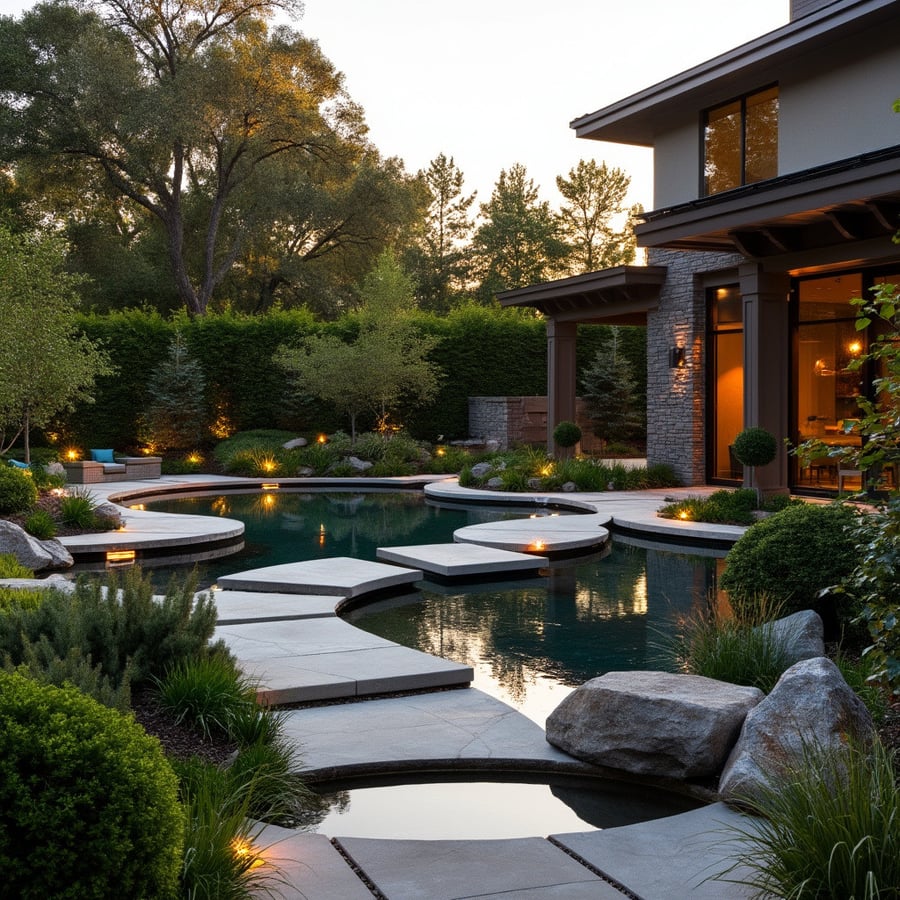2024 Landscape Architecture Trends: Elevate Your Outdoor Spaces

The evolution of landscape architecture continues to reshape outdoor environments across Long Island, bringing fresh perspectives to both residential estates and commercial properties. Whether you're planning to revitalize your property or seeking inspiration for future projects, understanding current landscape architecture trends can help you make informed decisions about your outdoor space.
Sustainable Design Integration
Modern landscape architecture emphasizes sustainability without compromising luxury. Professional landscape architects now incorporate eco-friendly elements that maintain aesthetic appeal while supporting environmental consciousness. Native plant selection plays a crucial role in this approach, creating landscapes that thrive naturally in Long Island's climate while reducing maintenance requirements. When you work with a professional landscape architect, they'll help you select indigenous species that complement your property's aesthetic while supporting local ecosystems.
Technology-Enhanced Outdoor Spaces
Smart technology integration has become a cornerstone of contemporary landscape architecture. Your outdoor space can now feature sophisticated irrigation systems, automated lighting controls, and climate-responsive elements. These technological additions not only enhance functionality but also contribute to resource conservation. Professional landscape architects can design systems that adjust to weather conditions, optimize water usage, and create ambient lighting scenarios for different occasions.
Multifunctional Design Elements
The concept of creating functional outdoor spaces has evolved beyond basic patio arrangements. Modern landscape architecture emphasizes zones that serve multiple purposes. Your outdoor area might include an elegant entertainment space that doubles as a peaceful retreat, complete with carefully planned sight lines and strategic plant placement. Professional designers can help you maximize your property's potential by creating versatile areas that adapt to different uses while maintaining a cohesive aesthetic.
Architectural Harmony
Today's landscape architects focus on creating seamless transitions between indoor and outdoor spaces. This approach involves careful consideration of your property's architectural style and ensuring that landscape elements complement existing structures. The integration of materials, colors, and textures plays a vital role in achieving this harmony. When you engage with a landscape architect, they'll analyze your property's architectural features to design outdoor spaces that feel like natural extensions of your home or commercial building.
Sustainable Water Features
Water elements continue to be popular in landscape architecture, but with a modern twist focusing on sustainability. Professional designers now incorporate water features that require minimal maintenance while creating maximum impact. These might include recycling fountains, rain gardens, or bioswales that manage stormwater while adding visual interest to your property. Your landscape architect can help you select water features that complement your space while supporting environmental goals.
Strategic Color Implementation
Understanding the role of color in landscape design has become increasingly sophisticated. Professional landscape architects now approach color as a year-round consideration, planning for seasonal changes while maintaining visual interest throughout the year. Your outdoor space can feature carefully selected plant combinations that provide continuous color through different blooming cycles, complemented by hardscape elements that anchor the design.
Innovative Material Selection
The selection of materials in landscape architecture has expanded significantly. Contemporary designs often incorporate sustainable materials that offer both durability and aesthetic appeal. Your landscape architect might suggest permeable pavers for driveways, recycled materials for retaining walls, or composite decking materials that require minimal maintenance while maintaining a luxurious appearance.
Privacy Through Design
Creating private outdoor spaces remains a priority in landscape architecture, particularly in upscale neighborhoods. Professional designers now employ creative solutions that provide privacy without sacrificing style. These might include living walls, strategically placed specimen trees, or architectural screens that double as artistic elements. Your landscape architect can develop privacy solutions that enhance rather than detract from your property's overall design.
Lighting as an Architectural Element
Landscape lighting has evolved beyond basic functionality to become an integral part of architectural design. Professional landscape architects now approach lighting as a way to create atmosphere, enhance security, and highlight key design features. Your outdoor space can benefit from layered lighting schemes that transform the environment from day to night while ensuring safety and functionality.
Working with Professional Landscape Architects
When considering a landscape transformation, knowing how to choose a landscape architect becomes crucial. Look for professionals who understand current trends while maintaining a focus on timeless design principles. Your landscape architect should demonstrate expertise in balancing hardscape and softscape elements, implementing seasonal design strategies, and managing comprehensive landscaping design and installation processes.
Looking Ahead
As landscape architecture continues to evolve, staying informed about emerging trends helps you make decisions that will enhance your property's value and functionality. Working with professional landscape architects ensures your outdoor space incorporates these trends thoughtfully while meeting your specific needs and preferences.



